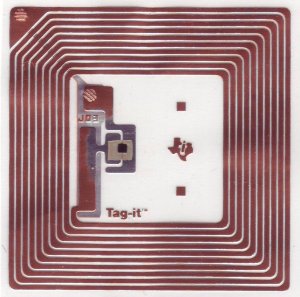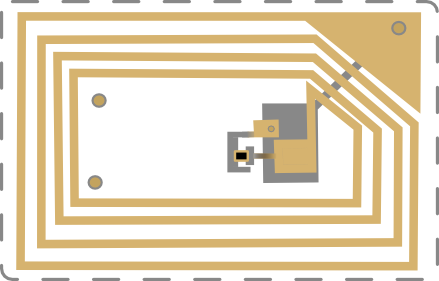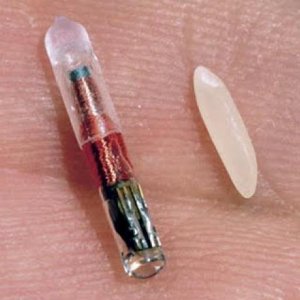Use of RFID Depends
From its inception, radio frequency identification (RFID) has had a questionable role in a world accustomed to cheap, convenient bar codes. Despite plummeting costs, the old advice remains valid: Use RFID only on items that justify the premium price.
Manufacturers are increasingly finding the answer in RFID asset management. By attaching RFID tags to such high-value assets as tank trailers, containers, tools and raw materials, factory managers can avoid waste, theft and equipment breakdown.
In more sophisticated applications, they can streamline work in process (WIP) and follow finished goods to the loading dock and beyond. They can even improve productivity by monitoring the work habits of drivers.
Getting started with RFID asset management

“The key question is what decisions are they looking to make that are above and beyond what they can achieve with existing identification technologies,’’ said Tim Zimmerman, a principal analyst at Stamford, Conn.-based Gartner Inc.
To find out, manufacturers must scrutinize their business processes for areas where an RFID tag, perhaps with a temperature or vibration sensor, could provide just the right information at the right time to improve the process.
Enjoying our insights?
Subscribe to our newsletter to keep up with the latest industry trends and developments.
Stay Informed“Otherwise, it ends up being a very expensive bar-code solution,’’ Zimmerman said.
Another early step is to identify those assets that provide the most business value.
“It depends on what their definition of ‘asset’ is,’’ said Dan Miklovic, a research vice president at Gartner. “A slab of steel in a steel factory is an asset.’’
The asset might also be a large pump in need of servicing, or a bin moving along an assembly line. An attached RFID tag can identify the contents and confirm they are at the correct station as they pass through “portals’’ of fixed RFID readers or are scanned with hand-held readers. Information on the bin’s tag can be updated to mark completion of steps in the manufacturing process. Weight sensors on the conveyor can determine when items have been placed inside or removed.
Sorting through manufacturing asset management technology
The next step is to determine which RFID tags, readers and supporting infrastructure will provide the necessary locational and item data at the lowest possible cost. The choices are bewildering. Read ranges and data rates generally increase with radio frequency (from a low of 125 KHz to a high of 5.8 GHz), Zimmerman said, and devices vary in their ability to penetrate metals and liquids.
Passive tags get their power from the RFID reader’s electromagnetic field, so they’re the cheapest, but they also have the shortest range. Active tags have their own battery-powered transmitters and longer ranges but are expensive.
The pricing that has made RFID tags cost effective for high-value items in the retail and pharmaceutical industries has not produced a similar tipping point in manufacturing, according to Miklovic.
“We haven’t seen the price of the cheap tags get cheap enough that you can put them on everything,’’ he said, adding that the most popular, 900-MHz passive tags now go for as little as 10 to 15 cents. At the same time, active tags don’t do enough for their $25 to $100 price to justify widespread deployment inside factories and warehouses, though they have taken hold in transportation and logistics.
Bar codes will continue to make sense for items that don’t require much data and can be read easily by a scanner with clear line of sight, experts said.
“If I’m just going to use a ‘nameplate’ and I just need some identifier, there are lots of solutions where a bar code is going to solve the problem,’’ Zimmerman said.
Other technologies offer RFID benefits
Other technologies offer some of RFID’s benefits. Wi-Fi access points and asset tags can eliminate the need for dedicated RFID readers, and optical real-time location systems (RTLS) can track the locations of lift trucks and containers to within inches.
Rush Tracking Systems, a consultant and integrator, often combines Wi-Fi with RFID. Passive tags running at 840-960 MHz on the ultra-high-frequency (UHF) band and Wi-Fi together form the sweet spot because of their proven standards, said Chuck Thompson, the company’s vice president of sales and marketing. Wi-Fi tags can tell an access point when an item leaves the building, but they aren’t as precise as the combination of RFID and optical RTLS.
“Generally, the more location precision you require, the more expensive the tag,’’ Thompson said.
Active RFID tags add an asset-management headache of their own: How to replace their batteries after two to five years.
Software to consider
Then there’s software to consider. Miklovic said RFID-compatible manufacturing asset management systems and tracking software tends to be from niche and midsized vendors, though he expects the market to consolidate. Tag and reader hardware, despite the smorgasbord of frequencies and standards, is more settled. He recommends applying due diligence to the application layer and buying niche solutions with full awareness that they could get absorbed and become obsolete.
What’s more, enterprise resource planning (ERP) suites lack robust support because demand has yet to materialize.
“The problem is it’s not hardware that solves the problem,’’ Miklovic said. “It’s the software and the information.’’
So to improve business processes, companies need to integrate their ERP and production systems with their asset-tracking infrastructure.
RFID tags are touted as “portable databases,’’ and while much information can remain on the tags, its full value may not be realized without data management efforts, such as a new repository or integration with ERP. Without it, RFID may not give adequate visibility to assets, or another island of automation will be created, according to Miklovic.
It helps that most of today’s RFID deployments are closed loop, where standards can be controlled and networks can be unified. Zimmerman said it also makes the business case more visible and easier to articulate.






















